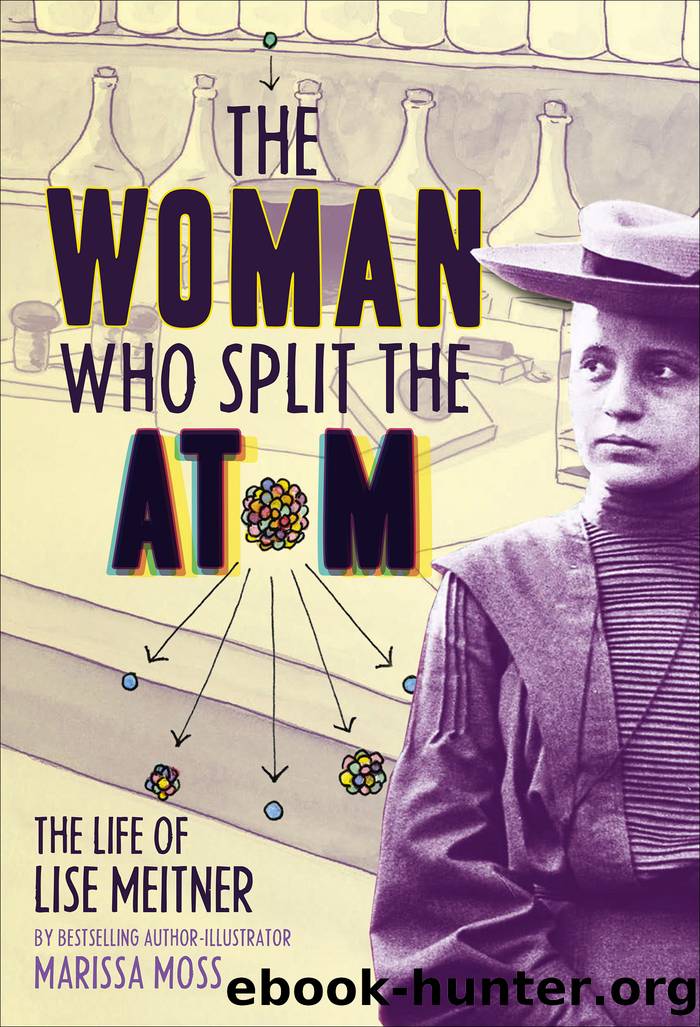The Woman Who Split the Atom by Marissa Moss

Author:Marissa Moss
Language: eng
Format: epub
Publisher: Abrams
Published: 2022-04-05T00:00:00+00:00
TWENTY-NINE
A LETTER FROM EINSTEIN
The letter went on to warn that the best sources of uranium (in the Congo and Czechoslovakia) could easily fall into German hands and noted that Germany had already stopped the sale of uranium from any mines that it controlled. This ominously suggested that the Nazis were already working on developing such mega-bombs. Otherwise, why bother with uranium?
The letter outlined steps the Roosevelt administration could take to outrace the German scientists, including staying in close touch with American physicists and their atomic work. More than that, the letter recommended that the president âspeed up the experimental work, which is at present being carried on within the limits of the budgets of University laboratories, by providing funds . . . and perhaps also by obtaining the co-operation of industrial laboratories which have the necessary equipment.â
Physicists were warning the British government as well about the military potential of this new science. Nuclear fission could generate incredible energy, but it could also be used for the biggest bomb the world had ever seen. What would happen if Germany developed such a weapon?
The Frisch-Peierls memorandum outlined how to sustain a nuclear reaction and showed that the bomb wouldnât need to be as heavy as Einstein thought. Their research led to the Tube Alloys Project, the code name for a secret British program to develop a nuclear weapon. Frisch and Peierls were invited to be part of this top secret project (despite their enemy alien status) and sent to Liverpool, where a cyclotron would help them test their ideas.
Einsteinâs suggestions became the seeds for the Manhattan Project, the vast American effort to build a nuclear weapon. Britain had nowhere near the resources of the United States, and once the Manhattan Project was started, the Tube Alloys Project became part of the much bigger American venture. While the United States ended up employing 130,000 people and spending 2 billion dollars on the project, Germanyâs Ministry of War set up a small office for nuclear research with nowhere near the personnel, funding, or organization. Heisenberg lobbied for more money from the government but was told the work was too speculative to be worth much investment. German censorship also hindered their progress. German physicists could no longer read international science news. And Meitner, Hahnâs contact in neutral Sweden, wasnât sharing any information. She was now too wary of Hahn to write about atomic work. Their partnership was definitely over, though she tried to keep some kind of friendship alive. Her letters now focused on daily life, her despair, and his worries.
For a long time, Meitner didnât have her furniture, her books, or her equipment. When her possessions were finally delivered, in May 1939, everything was broken and torn, crated hastily in a showy mess. Very little was salvageable. She wrote Hahn, âIn two weeks it wonât seem important, but right now it makes me feel pretty low.â Meitner sat, surrounded by the scraps of her former life. There was no way to put together the pieces again.
Download
This site does not store any files on its server. We only index and link to content provided by other sites. Please contact the content providers to delete copyright contents if any and email us, we'll remove relevant links or contents immediately.
Bloody Times by James L. Swanson(3985)
The Mayflower and the Pilgrims' New World by Nathaniel Philbrick(3922)
I'm Still Scared by Tomie dePaola(3919)
Pocahontas by Joseph Bruchac(3734)
Bomb: The Race to Build--And Steal--The World's Most Dangerous Weapon (Newbery Honor Book) by Steve Sheinkin(3469)
Flesh and Blood So Cheap by Albert Marrin(3400)
An American Plague by Jim Murphy(3372)
Little Author in the Big Woods by Yona Zeldis McDonough(3131)
The Giant and How He Humbugged America by Jim Murphy(2999)
The President Has Been Shot!": The Assassination of John F. Kennedy by Swanson James L(2740)
Hello, America by Livia Bitton-Jackson(2732)
Harry Potter: A History of Magic by British Library(2691)
The Landing of the Pilgrims by James Daugherty(2571)
The Extraordinary Suzy Wright by Teri Kanefield(2354)
Gettysburg by Iain C. Martin(2333)
Ben Franklin's Almanac by Candace Fleming(2068)
The Impossible Rescue by Martin W. Sandler(1977)
Bloody Times: The Funeral of Abraham Lincoln and the Manhunt for Jefferson Davis by James L. Swanson(1730)
Who Was Louis Braille? by Margaret Frith(1672)
